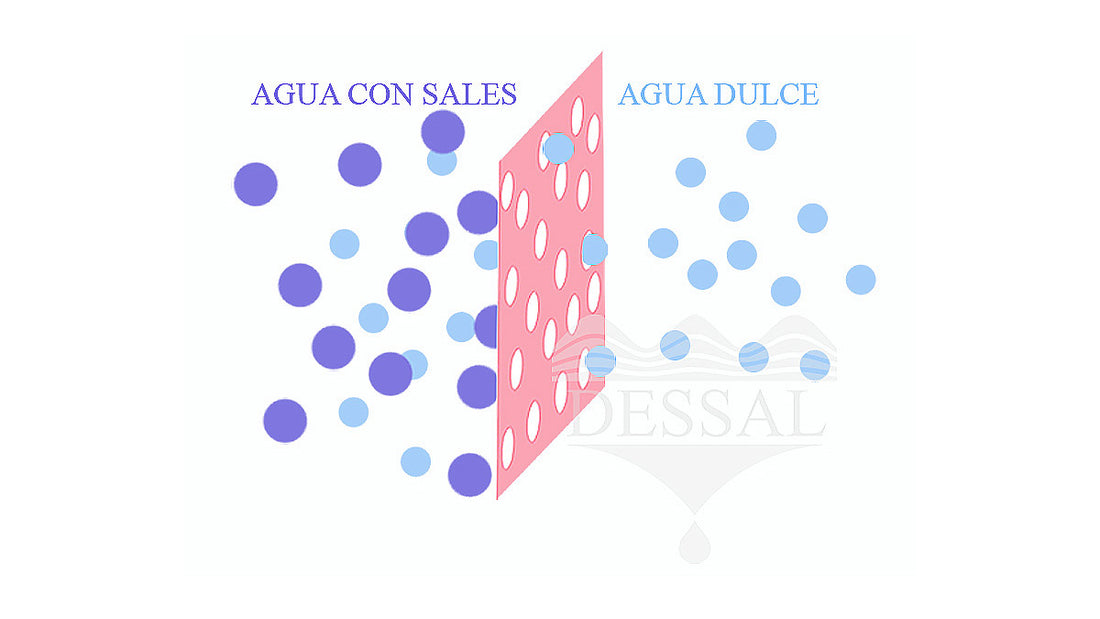REVERSE OSMOSIS
Compartir

What is reverse osmosis?
Reverse osmosis is the technology used to purify water in systems known as water treatment plants, desalination plants, or osmosis plants. This process is carried out using a semipermeable membrane and is essential in the production of drinking water, desalination and wastewater treatment. The technical aspects and operation of reverse osmosis are detailed below.
Reverse Osmosis Basics
Principle of osmosis : It is a natural process by which water moves from a solution of lower solute concentration to one of higher concentration through a semipermeable membrane in order to balance the solute concentrations on both sides of the membrane.
Reverse osmosis : applying high pressure to a concentrated salt solution forces water to pass through the semipermeable membrane in the opposite direction to natural osmosis. The result is fresh water on one side of the membrane and water with a high concentration of salts on the other.
Necessary components in a water treatment plant
- Pretreatment by filters : the water is subjected to pretreatment before reaching the membrane to remove larger particles and chlorine. The presence of chlorine would damage the membranes.
- Semipermeable membrane : essential for allowing water to pass through, but retaining dissolved substances such as salts, bacteria and other particles. Reverse osmosis membranes have extremely small pores, in the range of 0.0001 microns.
- High pressure pump : It is the heart of the system to overcome the natural osmotic pressure and force water through the membrane.
Applications
- Desalination : Reverse osmosis is essential for transforming salt water into drinking water, especially for boats or in coastal regions with a shortage of fresh water.
- Water purification : Widely used in bottled water production and home purification systems.
- Wastewater treatment : helps in the process of purifying industrial wastewater for reuse.
Advantages of desalination plants
- High efficiency : Removes up to 99% of contaminants, including salts, microorganisms and other particles. It even removes viruses, which, as they typically range in size from 0.02 microns (20 nanometers) to 0.4 microns (400 nanometers), are significantly larger than the pores of the membrane and cannot pass through it.
- Versatility : water treatment plants are suitable for different water sources such as sea water, river water or well water.
- Low maintenance : Today's systems require minimal maintenance and have a long service life.